Every cat owner knows that tantalizing allure of catnip. One minute, your feline friend is serenely snoozing.
The next, they're entranced by a simple herb, rolling, jumping, and purring with unbridled joy. But what is it about catnip that triggers this whimsical behavior?
And can you leverage it to foster a deeper bond with your furry companion?
In this article, we'll unravel the mystery behind this kitty wonder-herb, uncovering how it mesmerizes cats in three compelling ways.
We'll explore the science behind the reactions, and offer actionable tips on how to use catnip for your cat's wellness and enjoyment.
It's not just fun and games - you might just discover a new, enriching dimension to your cat's life. Ready to step into this feline-fascinating world? Let's dive in!
Understanding Catnip: A Feline's Green Delight
If you're a cat owner, chances are you've come across the term 'catnip'. This seemingly magical plant has an uncanny power over our feline companions.
It's popular, too.
TheCatSite alone hosts hundreds of threads about catnip, with many users even incorporating the term into their usernames!
Cats love it, no question there.
But why? What makes catnip so irresistible to them? Is it safe? And should you treat your pet to this fascinating green herb?
Let's delve into these questions and unravel the enigma that is catnip.
A Closer Look at Catnip
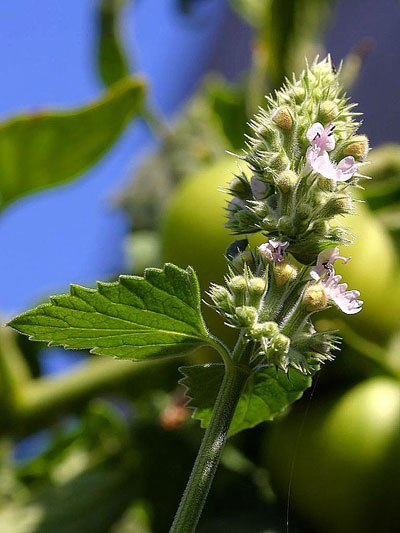
Also known as catmint, field balm, or catswort, catnip scientifically goes by Nepeta cataria.
It's part of the Lamiaceae family and the Nepeta genus. Fully grown, the plant sports petite white or pink flowers with a touch of purple.
The leaves of the catnip plant are rough, appearing in shades of green or brown.
You can spot this plant in diverse regions, from China, Central Asia, and Europe to North America and New Zealand.
So, what does it look like? Catnip bears a striking resemblance to mint. It flaunts jagged leaves and, during its blooming phase, clusters of tubular flowers along the upper stem.
Beyond Felines: Catnip's Uses For Humans
Humans can find many uses for catnip, too. While its role as a medicinal herb has dwindled with modern medicine, people still find innovative ways to utilize it.
Some smoke it as a calming herbal alternative, while others enhance their culinary creations with its unique taste or brew it into tea.
Interestingly, the same component that attracts cats - nepetalactone - is believed to repel flies and mosquitoes.
When distilled into oil, catnip can even deter pests like termites and cockroaches.
Some enthusiasts tout catnip oil as more effective than DEET, a common ingredient in mosquito repellents.
Plus, the oil contains iridodial, attracting lacewings that feed on mites. Butterflies, too, are drawn to catnip's compounds.
Quite the versatile plant, isn't it? But let's delve deeper into why it's a feline favorite.
How Does Catnip Affect Cats?
How does catnip influence cats? It's all about nepetalactone. This compound triggers receptors inside a cat's nose.
Once activated, cats often respond by chewing, licking, swiping, or nuzzling the catnip. Some roll over in delight. It's not through their Jacobson's organ, but their typical sense of smell.
The catnip effect isn't instant. It takes a minute or two, sometimes up to fifteen. Cats may then start purring, drooling, and become drowsy.
Some might jump around before finally tiring out. Remember, catnip may make some cats anxious. They could even become aggressive. It's safer to put catnip on a toy or the floor, not your hand.
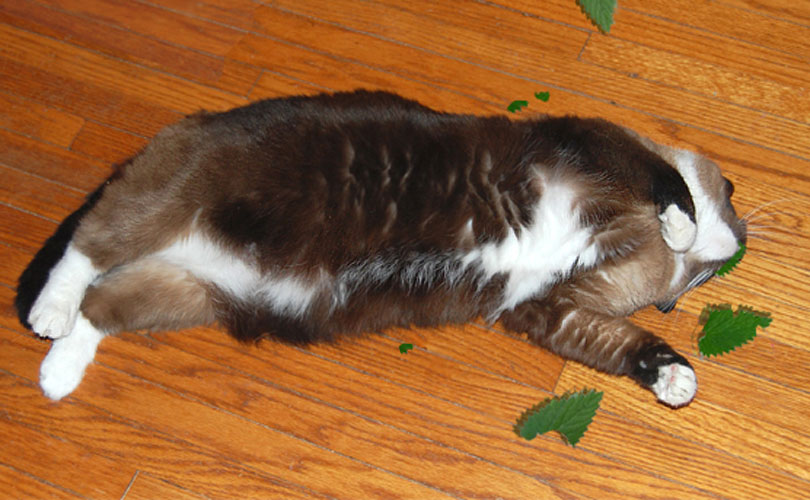
Common catnip reactions include:
- Purring
- Dilated pupils
- Drooling
- Behaviors such as rolling in the catnip
- Heightened anxiety
- Aggression
Does Catnip Affect All Cats?
For all those insects that love catnip so much, no other creature loves it more than cats.
Many species of cats - among them tigers, lions, lynxes, servals, cougars, and leopards as well as our domestic cats - enjoy catnip.
Not every domestic house cat goes nuts for catnip either. A study from BMC Veterinary Research estimated that 33 percent of felines don't care for catnip.
Why? Another study, published in a Canadian veterinary journal, answers that question.
It cites research from 1962, in which 26 Siamese breeding cats in a colony were given catnip to see how or if they'd respond.
The conclusion was that some cats have a gene that makes them react to catnip.
According to that study, a specific dominant gene dictates whether a cat goes crazy for catnip. That means that if one of the cat's parents enjoyed catnip, so will the offspring.
More recent research from 2011 suggests there may be several genes at play.
Both studies do agree that genetic background will play a role in whether cats care for catnip. If you can trace your cat's lineage and find that their parents didn't like catnip, then chances are your cat won't either.
The genetic tendency also affects a cat's sensitivity to Tartarian honeysuckle wood (Lonicera tatarica), silver vine (Actinidia polygama), and valerian root (Valeriana officinalis), all of which have similar properties to catnip.
Why Does Catnip Not Affect Kittens?
If you have a kitten, you might have thought it would be fun to treat him or her to some catnip.
This experiment will be the little furball's first time enjoying the treat, so you're excited. You make a big spectacle of introducing the catnip to your kitty.
Alas, no response. You try and try to get the kitten interested, but it just doesn't happen. Why not?
Is this because of hereditary factors like those mentioned above? Is this something you should be concerned about?
Before you panic and prematurely schedule a vet appointment, you should know that most kittens don't get too enthused about catnip in their infancy.
Pam Johnson-Bennett, a cat behavioral expert, says that if your kitten is three months of age or younger, they may be uninterested and even disgusted by catnip.
They're too young to have any sort of reaction, and you'll have to wait until they're at least six months old and then try again.
Kittens aren't the only ones who don't necessarily respond to catnip or seem to have only a passing interest. The older your cat gets, the more their desire to have catnip wanes.
Also, cats of any age can become gradually less affected by catnip if you give it to them all the time. Johnson-Bennett recommends limiting exposure to a single time each week and no more than that.
Is Catnip Safe For Cats?
When you give your kitty catnip, you're merely exposing them to ground-down parts of the Nepeta cataria plant, such as the stems or leaves (the flowers, as pretty as they are, are not often used in producing commercial catnip for cats).
In moderate use, catnip is safe for your cat to have. Even if they happen to nibble and swallow some leaves, it shouldn't have any ill effect on them.
Can Too Much Catnip Kill A Cat?
You should be aware that kitty catnip overdoses are a possibility, though. These certainly don't happen often, but they can.
Now, when a cat overdoses on this particular substance, it can be scary for humans, but not so much for our feline friends.
An overdose in cat terms is just when they ingest too much catnip to the point of it leading to diarrhea and vomiting. It will not kill them.
Pennsylvania veterinarian Dr. Shelby Neely says that cats are unlikely to overdose on catnip because they seem to sense when they have had enough.
This may not be true of all cats, though. Some felines will take as much catnip as you're willing to give them.
The best way to avoid a catnip overdose then is to limit the quantities of the catnip you offer.
If you do happen to give your cat too much catnip accidentally, there's no need to panic.
Most cats who have diarrhea and vomiting from a catnip overdose will tend to recover just fine at home with a little rest. However, when in doubt, call your veterinarian. It's better to be safe than sorry.
How To Add Catnip To Your Cat's Life
If your cat is at least six months old, then you can and should make catnip a weekly part of their life.
Not only does it help the two of you bond, but some experts even use it as a means of controlling behavior.
Pam Johnson-Bennett, for instance, suggests adding catnip if you are having many people over to your home, and your cat is generally fearful of new guests. The plant will calm them down and prevent anxiety.
You can also use catnip to engage your cat in play, which is helpful if they're not exceptionally playful any other time.
If your cat isn't taking to a new scratching post, bed, or another accessory, applying catnip to the item will attract their interest.
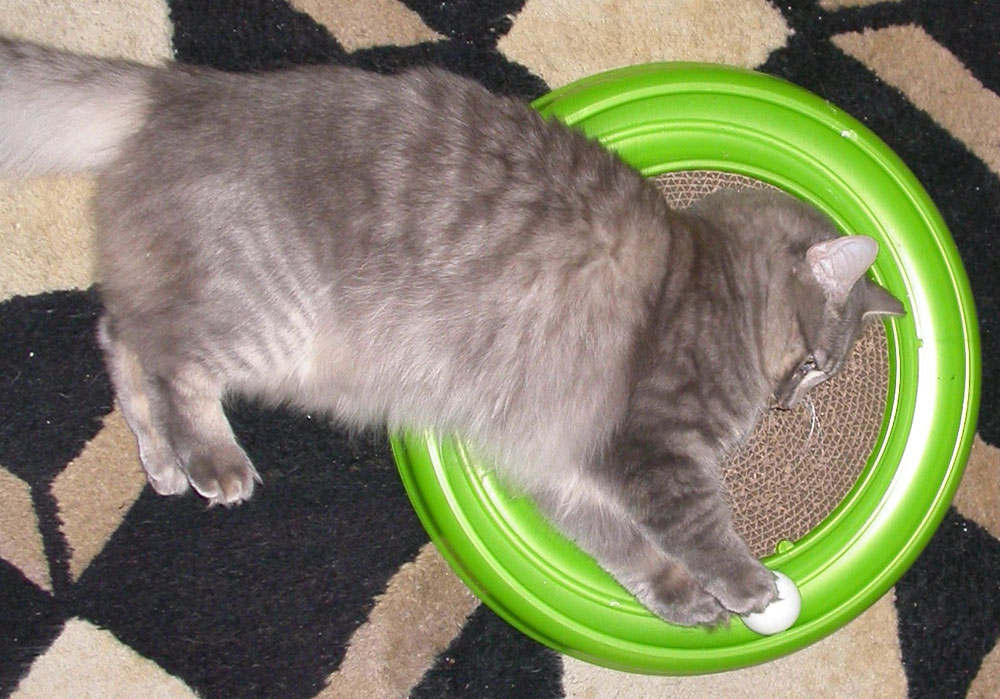
Keep in mind that catnip affects cats in many ways.
Some cats can become anxious and even aggressive when stimulated by catnip, so don't use it when introducing a new pet or in any other situation where your cat may already be stressed.
If you're interested in adding catnip to your cat's life, you have several ways in which you can do so. You might prefer to grow catnip, use dried catnip pieces, or put catnip in a toy.
Growing and Using Catnip: A Feline-Friendly Guide
If you want to grow your catnip, you absolutely can. Many gardeners favor catnip because of the wealth of insects it brings in. You can also use it for decorative purposes in the garden.
Even better is that the catnip plant does not need tons of watering, and it will survive even in drought conditions. It does thrive best when it gets plenty of sunlight, though.
To start your catnip garden, use fertile soil (or add nutrients to the soil as needed). Then, plant your seeds with a distance of at least 18 inches between them, 24 inches if you can.
Be sure you prune the flower buds and stems as they appear. Timely pruning will allow the catnip to grow to its full potential. Another handy tip for letting the catnip thrive?
Keep it away from your kitty until you're happy with your catnip harvest.
If you are concerned about outdoor cats getting to the catnip before you can cut it and bring it inside, you might want to try erecting a loose chicken-wire fence around the perimeter of your garden.
A fence will deter most cats from getting at the plant unless your feline is a big jumper.
SIGN UP FOR THECATSITE'S EMAIL UPDATES >
Drying Catnip for Long-Lasting Fun
Perhaps you prefer to offer your cat dried catnip. This is common among cat owners. Dried leaves are familiar, and if you choose organic catnip, you avoid any additives.
To dry catnip, either grow your own or buy fresh catnip. Cut a healthy sprig. Avoid trimming too many leaves to allow for future growth.
Place your catnip on a paper towel, fold the corners to encase the sprig, then microwave for over two minutes. Beware: the smell will drive your cat wild.
Use an air freshener or wait 30 minutes for the smell to fade. Store unused catnip in a jar for future use.
Catnip Spray: A Quick and Easy Option
Several companies offer catnip spray from steam-distilled concentrated catnip oil. If you prefer not to mess around with tiny leaves, this can be a good option.
Keep in mind that the spray is concentrated and don't spray too much. Start with one or two squeezes and check your cat's reaction before applying more.
Catnip Toys: Excitement And Exercise For Your Cat
Whether you prefer to grow your own catnip or buy it from a store, one way to give your cat some exercise is to place catnip inside a toy. Now, you have a few options for this.
You can either buy a toy or use a preexisting favorite. Some toys will come with a vial of catnip you can slip inside. Alternatively, you can also rub catnip all over the toy.
Now toss the toy into an open room and watch as your cat goes bonkers. For the next 10 minutes or so, you can enjoy as your cat sniffs chases, pounces, tosses, and chews on the toy.
Of course, the catnip sensation will eventually wear off, and your kitty will get sleepy and probably take a nap. Until then, congratulations! You helped your cat become more active!
According to a survey we had, more than 25% of cats prefer catnip toys over any other type of toy! If you've never tried one, you should. It's an affordable and safe way for your cat to enjoy catnip.
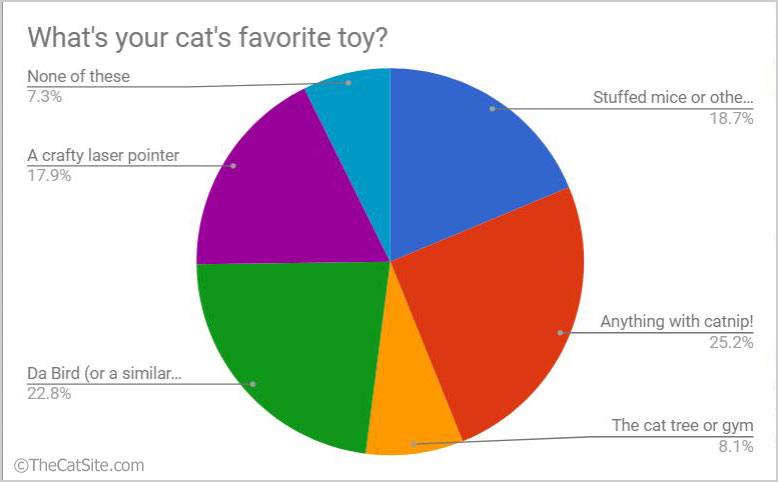
What Kinds Of Toys Can You Add Catnip To?
All sorts! You might choose a small plush stuffed animal, a dangling toy the cat can chase, or even a hard plastic or rubber toy.
No matter what your cat enjoys playing with after you add a little catnip, they will be rip-roarin' to go!
Here are a few popular choices from Amazon:
Embracing Catnip: An Enriching Addition to Your Cat's Life
In conclusion, catnip truly is a wonderful herb that adds another layer of fascination to our understanding of our feline friends.
From eliciting humorous and adorable behaviors to potentially fostering a deeper bond between you and your cat, catnip offers a world of enriching possibilities.
Understanding its scientific influence on our cats, recognizing its safe usage, and knowing how to incorporate it into our pet's routine are crucial elements for cat owners.
And whether your cat is a catnip lover or among those who are indifferent, navigating the world of catnip opens up a new realm of understanding your pet's preferences and behaviors.
This plant isn't just a feline fascination - it's a valuable tool in pet care. Used responsibly, catnip can aid in cat training, manage feline stress, and even motivate a lazy cat to play and exercise.
While more research is needed to fully understand the genetic predisposition to catnip and the scope of its effects, the current findings certainly provide a compelling reason to consider catnip as part of your feline's life.
So go ahead, introduce that catnip toy or sprinkle some dried catnip leaves - and step back to watch your furry friend embark on an exhilarating catnip adventure.
As always, moderation is key - balance enjoyment with health and safety. After all, the goal is to enhance our cats' lives and deepen the bond we share with them.
Don't forget to let us know if your cats like catnip!
SIGN UP FOR THECATSITE'S EMAIL UPDATES >
Leave us a comment and describe how catnip affects your kitties and share your tips for introducing more of it into the lives of our precious felines. You can also share this post on Pinterest by pinning this image -
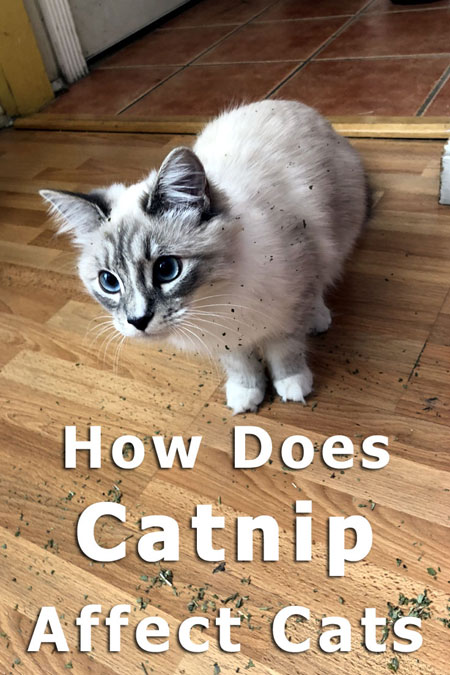
Related articles that might interest you:
- Beating Boredom - What Indoor Cat Owners Need To Know
- 7 Proven Ways To Get Your Cat To Be More Active
- Choosing The Right Cat Toy For Your Kitten
Note: We may get commissions for purchases made through links on this page.





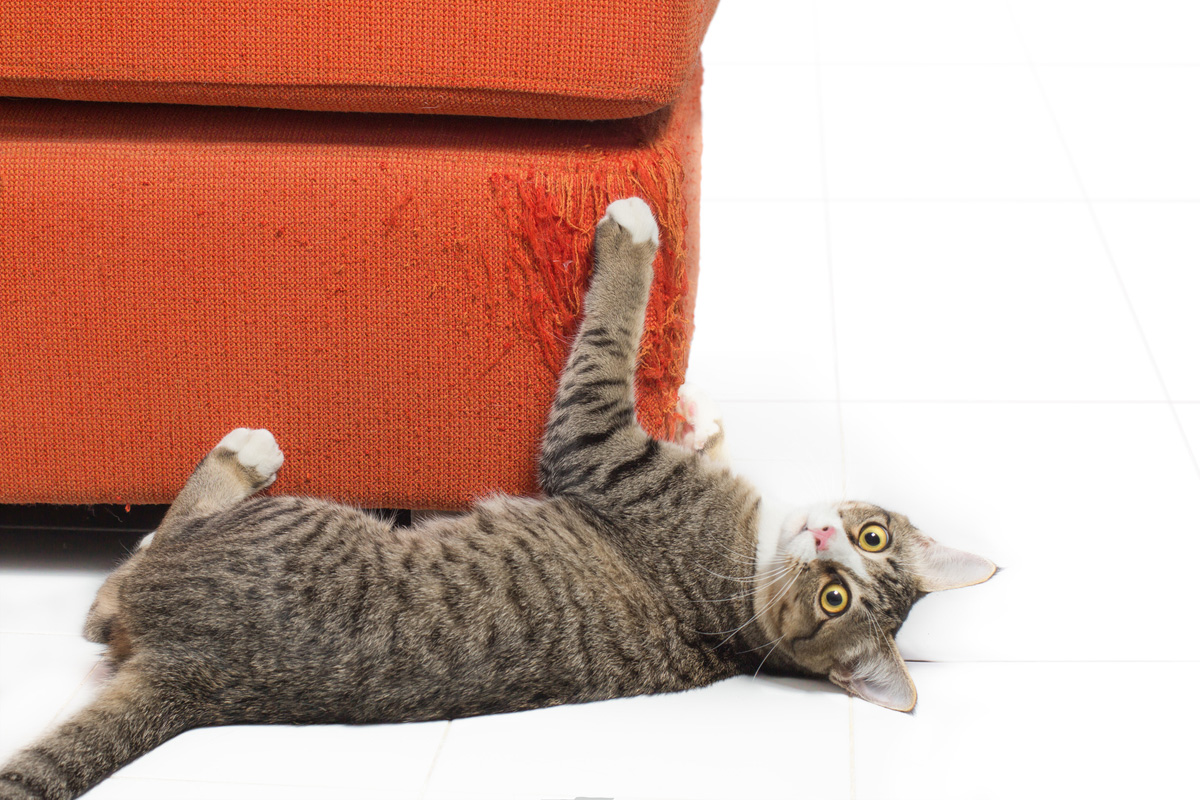
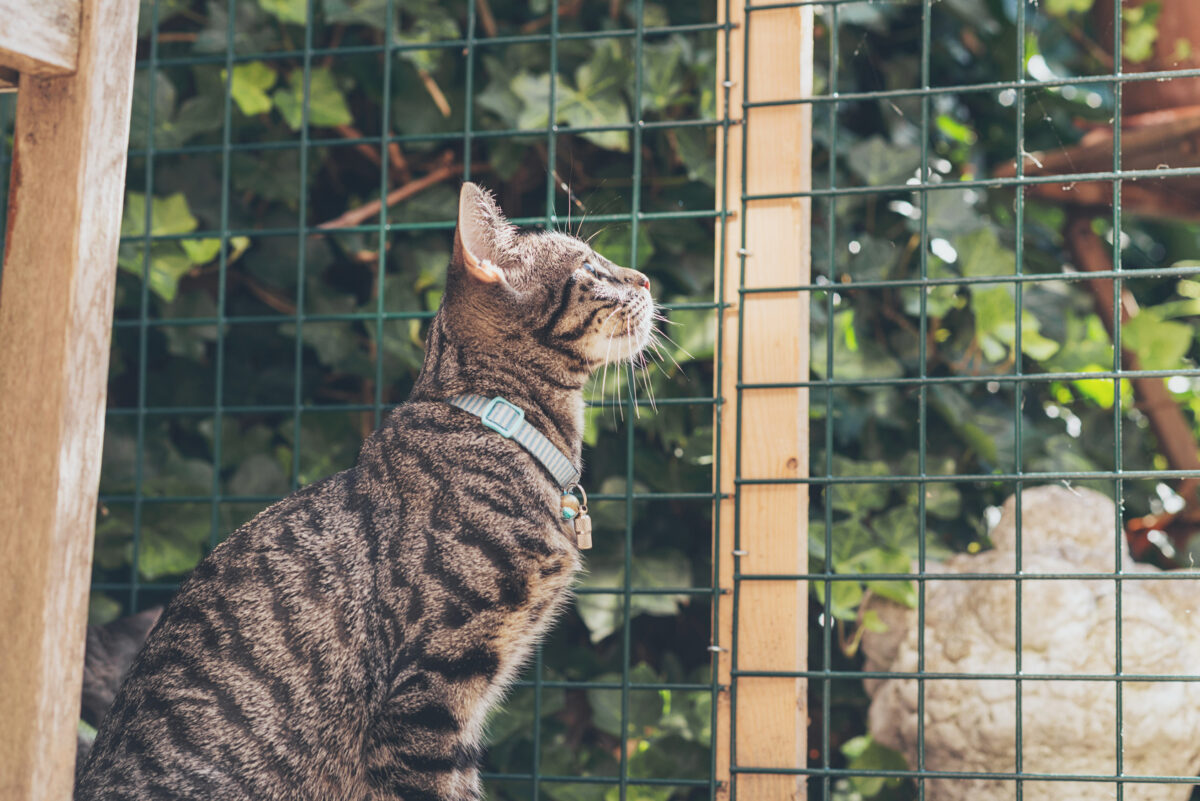
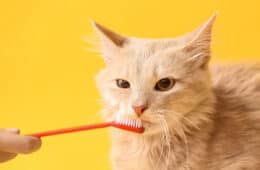
9 comments on “How Does Catnip Affect Cats? [3 Actionable Ways]”